Unusual repertoire of vocalizations in the BTBR T+tf/J mouse model of autism
- PMID: 18728777
- PMCID: PMC2516927
- DOI: 10.1371/journal.pone.0003067
Unusual repertoire of vocalizations in the BTBR T+tf/J mouse model of autism
Abstract
BTBR T+ tf/J (BTBR) is an inbred mouse strain that displays social abnormalities and repetitive behaviors analogous to the first and third diagnostic symptoms of autism. Here we investigate ultrasonic vocalizations in BTBR, to address the second diagnostic symptom of autism, communication deficits. As compared to the commonly used C57BL/6J (B6) strain, BTBR pups called more loudly and more frequently when separated from their mothers and siblings. Detailed analysis of ten categories of calls revealed an unusual pattern in BTBR as compared to B6. BTBR emitted high levels of harmonics, two-syllable, and composite calls, but minimal numbers of chevron-shaped syllables, upward, downward, and short calls. Because body weights were higher in BTBR than B6 pups, one possible explanation was that larger thoracic size was responsible for the louder calls and different distribution of syllable categories. To test this possibility, we recorded separation calls from FVB/NJ, a strain with body weights similar to BTBR, and 129X1/SvJ, a strain with body weights similar to B6. BTBR remained the outlier on number of calls, displaying low numbers of complex, upward, chevron, short, and frequency steps calls, along with high harmonics and composites. Further, developmental milestones and growth rates were accelerated in BTBR, indicating an unusual neurodevelopmental trajectory. Overall, our findings demonstrate strain-specific patterns of ultrasonic calls that may represent different lexicons, or innate variations in complex vocal repertoires, in genetically distinct strains of mice. Particularly intriguing is the unusual pattern of vocalizations and the more frequent, loud harmonics evident in the BTBR mouse model of autism that may resemble the atypical vocalizations seen in some autistic infants.
Conflict of interest statement
Figures


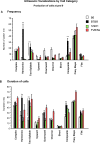
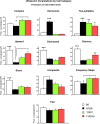
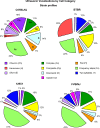

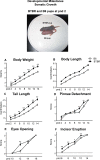
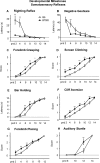
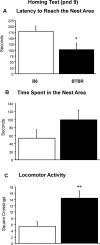

References
-
- Au WW, Pack AA, Lammers MO, Herman LM, Deakos MH, et al. Acoustic properties of humpback whale songs. J Acoust Soc Am. 2006;120:1103–1110. - PubMed
-
- Oswald JN, Rankin S, Barlow J, Lammers MO. A tool for real-time acoustic species identification of delphinid whistles. J Acoust Soc Am. 2007;122:587–595. - PubMed
-
- Wilbrecht L, Nottebohm F. Vocal learning in birds and humans. Ment Retard Dev Disabil Res Rev. 2003;9:135–148. - PubMed
-
- Nyby J. Auditory communication among adults. In: Willott JF, editor. Handbook of mouse auditory research: from behavior to molecular biology. Boca Raton, FL: CRC Press; 2001. pp. 3–18.
-
- Blanchard RJ, Blanchard DC, Agullana R, Weiss SM. Twenty-two kHz alarm cries to presentation of a predator, by laboratory rats living in visible burrow systems. Physiol Behav. 1991;50:967–972. - PubMed
Publication types
MeSH terms
Grants and funding
LinkOut - more resources
Full Text Sources
Other Literature Sources
Medical
Molecular Biology Databases
Research Materials
Miscellaneous

